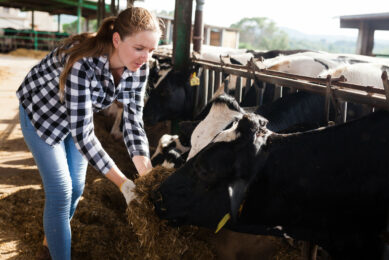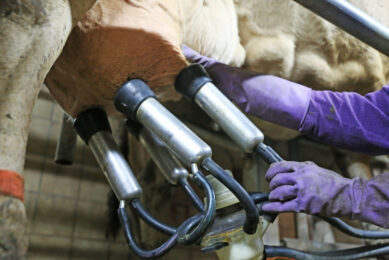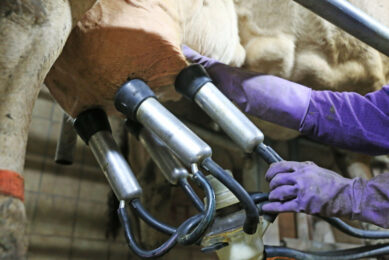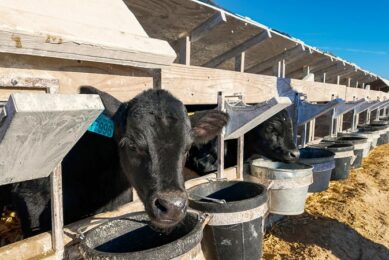Russia invests in building large-sized dairy farms
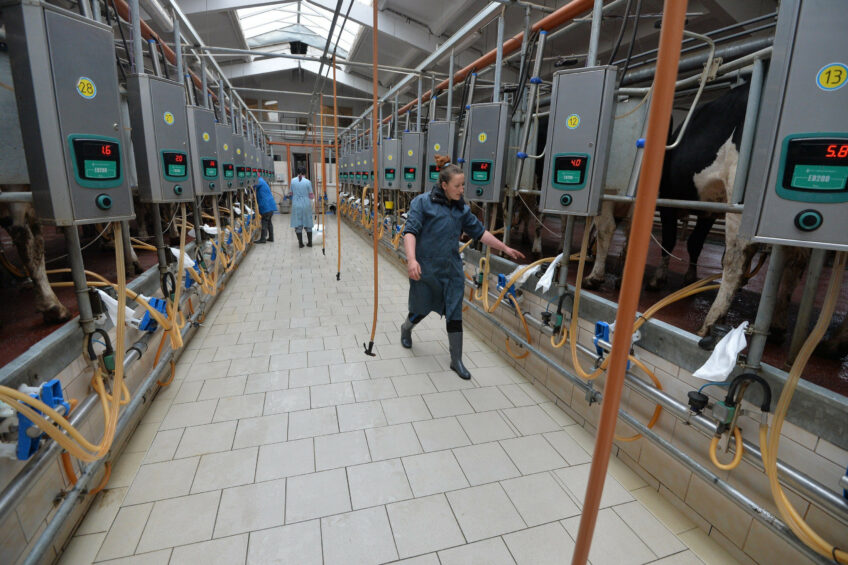
By building hundreds of large dairy farms, Russia wants to become almost self-sufficient for dairy. But the country has still many challenges that need to be overcome first.
Before 2020, Russia wants to build nearly 800 new large-sized dairy farms designed for at least 3,000 heads of dairy cattle each. This was announced by Alexander Tkachev, Russia’s Agricultural Minister, at the Grain-Feed-Veterinary conference in Moscow, last February. He estimated that this plan will increase Russia’s dairy industry’s capacity by 5 million tonnes of milk, bringing it to 36 million tonnes in total. As a result, the country’s industry will be able to almost fully meet domestic demand, Tkachev said.
Effect of trade barriers
Over the past few years, agricultural organisations and industrial farms in Russia have been increasing milk production with 3% per year on average. At the same time, production performance at small (backyard) farms has dropped. According to Tkachev, even after reaching ‘self-sufficiency’, Russia will continue to import 5-10% of milk. Compared to the import dependence of almost 50%, 3-5 years ago, this is almost nothing. “This is however calculated with the current food embargo in mind,” Tkachev noted. “Sooner or later Russia will remove trade barriers and products (including dairy) from the European Union will be allowed back into Russia. This will increase competitiveness for dairy products. Tkachev emphasised that Russia should realise that future EU imports can be a serious challenge for the growing Russian dairy industry, with its current prices and production costs. Earlier, Russia’s First Deputy Prime Minister Igor Schuvalov said that the food embargo, at least partly, could possibly be lifted around end of 2017.
Old and new challenges
“With the possible lifting of the food ban in 2017 in mind, the task of the Russian dairy industry is to get stronger and to boost production performance,” Tkachev said. To do this, Russia will follow the example of their neighbour, Belarus, where its industry’s development model appeared to be quite effective, being able to compete with Russian and European dairy imports. Nevertheless, Tkachev’s plans seem quite ambitious, giving the fact that Russia has both new challenges (price competiveness and lack of high milk production for example) and old challenges (EU food embargo) in the dairy sector.
Problems with animal diseases
Another challenge facing the Russian dairy sector is animal health related. From February 1st, 2017, Russia’s veterinary watchdog Rosselhoznadzor has restricted supplies of raw milk from the regions, where animal diseases, such as anthrax and bluetongue, have been identified over the last couple of months. As a result, restrictions have been introduced in 25 Russian regions, including Rostov Oblast and Republic of Tatarstan, which are among the list of the country’s top-5 largest milk-producing territories. On February 10th, 2017 the National Union of Dairy Producers (Soyzmoloko), sent an open letter to Alexander Tkachev asking for these restrictions to be cancelled. Soyzmoloko explained that Rosselhoznadzor now requests milk producers to pasteurise supplied milk, but almost all manufacturers have no equipment to do so. “This means that milk from these regions, labelled as not safe because of the veterinary situation, has been completely stopped. This increases the milk shortage in Russia and costs across the whole supply chain,” according to Soyzmoloko. Considering that milk often has to travel long distances (thus incurring significant logistics costs) the challenge to increase domestic supply with competitive prices becomes even more difficult. A large number of dairy processing facilities are located in Moscow Oblast. They are supplying milk from the Republic of Tatarstan, located nearly 850 km away. Not surprisingly, in 2016, the shortage of milk in Russia was amounted to 8.1 million tonnes (20% of the market size).
Investment attractiveness
To support the growth of large, high producing dairy farms in Russia, the country’s Agricultural Ministry announced that the Russian dairy industry would receive state aid. In 2016, the subsidies were doubled, compared to funds given in 2015 (RUB30 billion or US$ 500 million).The Ministry aims to at least maintain this level of subsidy money over the coming years. In addition, subsidies for short-term bank loans for milk producers increased 5 times to RUB1.5 billion (US$ 25 million). In addition, subsidies for reimbursement of capital costs for construction and re-construction of farms spiked to RUB6 billion in total (US$ 100 million), together with an increase in subsidies paid for each kilogram of milk produced by Russian farmers. The main goal of all these subsides was to raise the average level of profitability of dairy farms in Russia, hence improving the investment attractiveness of the sector. However, these measures did not result in better productivity, as the rising cost of feed and numerous other factors overruled the subsidies.
Construction on hold
Because of the failing subsidy system amongst other things, the amount of dairy products affordable for most people have dropped over the last couple of years. This is also due to the falling purchasing power of the Russian population. “The availability of credit resources for milk manufacturers has reduced, the result being that many investment projects for the construction of new farms have been frozen,” according to the Ministry. According to Soyzmoloko, the problem is that Russia’s banks use loans with a backpay time of below 15-20 years. So without state support it is simply impossible to commission any new milk farm in the country. In addition, the investment attractiveness of the dairy industry in Russia is lower than the poultry or pig industries, so agricultural investors are more likely to invest money in these other livestock segments.
Hard to find investors
The basic forecast of the Ministry is that milk production in Russia will raise by 0.6% – 0.8% per year in 2017-2018. After that, the growth pace is expected to grow. However, backyard dairy farms still account for 45% of Russia’s milk production and a further reduction in milk and performance (often seen at these smaller farms) could offset growth of the total Russian dairy sector. At the same time, many dairy experts in Russia are in doubt that within the coming four years (giving these challenges), hundreds of new investors can be found who are willing to put their money into the Russian dairy sector. It seems that Russia first needs to work out the continuing economic crisis, before the country is attractive again for (agricultural) investors.
Join 13,000+ subscribers
Subscribe to our newsletter to stay updated about all the need-to-know content in the dairy sector, two times a week.




